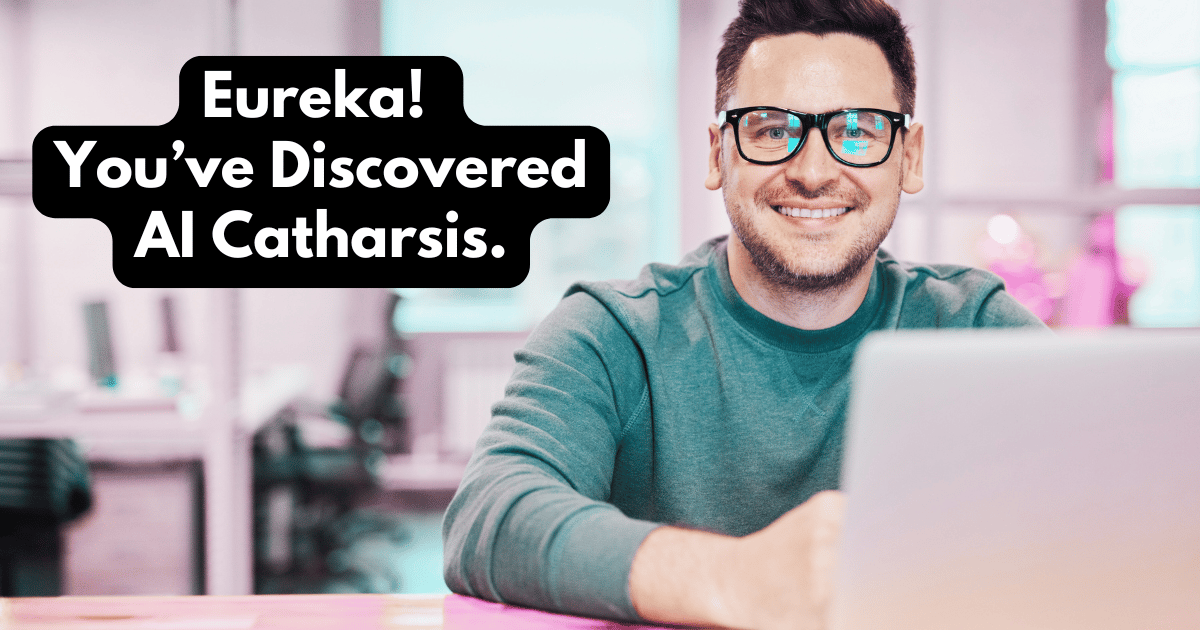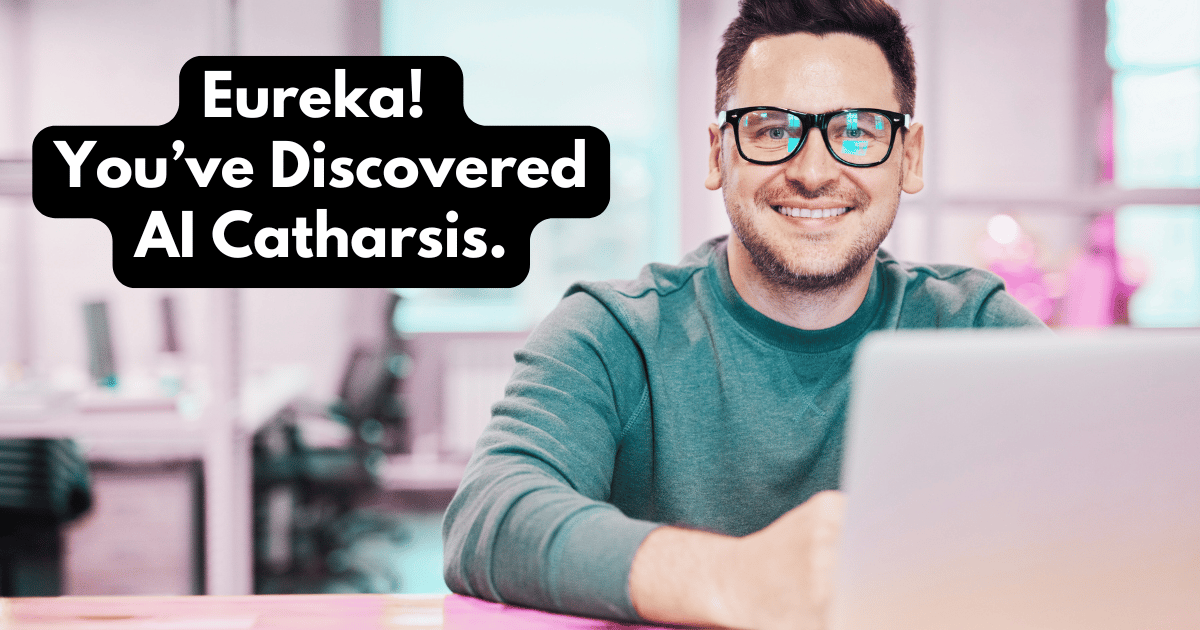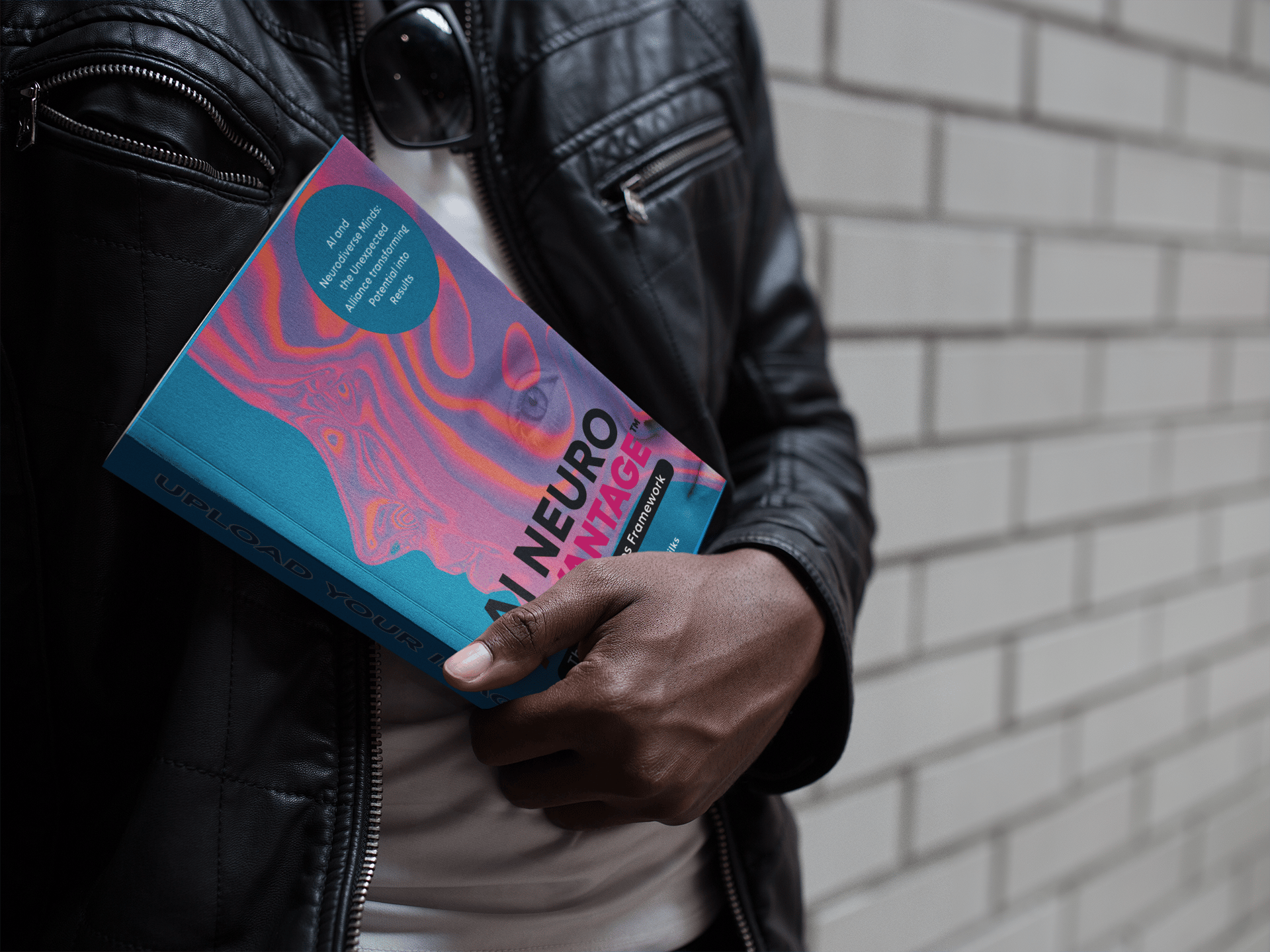- Brain Doubles Newsletter
- Posts
- 💥 Eureka! Welcome to AI Catharsis.
💥 Eureka! Welcome to AI Catharsis.
The Profound Relief That Comes From Working With AI


Hello,
I've been noticing something fascinating on LinkedIn lately. Post after post from neurodivergent professionals describing the same experience with AI: profound relief, unexpected flow, cognitive liberation, creative empowerment—call it what you will.
These are the same things I feel. Catharsis. Relief. A great big exhalation of breath.
But WHY?
After two years and millions of words exchanged with different AI models, I have my own interpretation of what's happening.
Understanding the Machine Mind
AI is essentially a sophisticated pattern-recognition system trained on a massive collection of human knowledge—research, data, history, media, encyclopedias, conversations, opinions, the works. It learns through algorithms, trial and error, and human guidance.
It's not perfect. It loses track in long conversations. Has memory glitches. Gets things wrong. Makes stuff up. Carries built-in biases.
But here's the thing: its specific strengths—pattern recognition, knowledge synthesis, and processing power—complement human minds remarkably well because it excels where many of us struggle.
When Two Intelligences Work Better Than One
I understood this better when I began mapping what each—human and artificial minds—could and couldn't do.
AI can't make intuitive leaps—it needs logical pathways. It can't feel the emotional weight of a decision. It can't draw from lived experience or recognize the subtle human patterns that emerge from decades of observation. It lacks the creativity that comes from a human mind shaped by real-world experience.
Meanwhile, I couldn't hold seventeen different research papers in active memory while building an argument. I couldn't deliver the speed and structure that AI could. I couldn't synthesize hundreds of sources in minutes or simultaneously explore five different frameworks without losing track.
We weren't just two intelligences with different capabilities. We were complementary intelligences, each strong precisely where the other wasn't.
Four Mechanisms Behind Our Relief
Once I understood this concept of complementarity, I could finally name what was happening for me. Four mechanisms, all working simultaneously:
Scaffolding: Just as scaffolding on a building keeps everything steady while it’s being built, AI does the same for my thoughts. It provides frameworks, shape, and logic. My scattered insights finally have the structure within which to develop.
Amplification: My ideas don't just get validated—they become bigger and better. That spark of an insight? We explore it from angles I hadn't considered, iterate and amplify it. Ideas become bolder, sharper, more nuanced.
Redistribution: This is the "lean on me" role. AI handles both thinking and producing tasks—researching, drafting, and formatting. Remember that fatigue from translating your thoughts into what the world expects, or from the overwhelming volume of work required. That’s gone. Now, that energy is yours again.
Extension: This still amazes me. I can now do things I couldn't before. Access new knowledge domains and create content in various formats, including video, music, illustrations, and animation. I can write code. Even build a simple app. These are capabilities previously inaccessible to me.
Why This Resonates So Strongly
Here's what all those LinkedIn posts are really describing: For the first time, many of us are experiencing what our minds can do when they're not fighting themselves.
The relief isn't just about getting more done. It's about finally having a partner who works with how you think, instead of against it.
We share these feelings of relief and catharsis because we're experiencing a similar shift: we’re moving from battling our unconventional thought patterns to embracing them as the extraordinary asset they are.
When you’ve spent your life at war with your own mind, frustrated by mental processing patterns that seemed to hold you back, the relief of finally having a partner who not only ‘gets’ you but also steps up and lets your ideas shine is nothing short of liberating.
I’d love to hear about your own “eureka” AI moments. Drop me a note at [email protected]
Next week: Is using AI cheating? Let's have the conversation everyone has an opinion about.
Until then
Janet

The AI@Work Brief
A regular snapshot of AI in the workplace
1. "Agentic AI" and the Reality of Blended Workforces
The natural evolution of AI - more autonomy - and a fundamental shift in how work is done, creating blended workforces where autonomous systems and humans collaborate in ways that were previously impossible.
The workplace is shifting toward what's being called "Agentic AI"—systems that can reason, adapt, and troubleshoot without constant human oversight. Unlike simple automation that follows scripts, these systems can coordinate with other tools and handle complex, end-to-end tasks that we previously thought required human judgment. For organizations, this represents a fundamental shift in how work is done, creating blended workforces where autonomous systems and humans collaborate in ways that were previously impossible.
2. 99% of Workers Want an AI "Friend"—But There's a Catch
People are hungry for more AI companionship, while having AI support might actually make us more aware of what only humans can provide.
A recent KPMG survey found that nearly all professional workers would welcome an AI chatbot as a workplace companion. This points to something interesting about workplace loneliness—a growing issue that many organizations haven't fully acknowledged. But the research also uncovered what they're calling the "AI paradox": the more people use AI technology, the more they crave authentic human connections.
3. Job Transformation, Not Replacement
Something we’ve always stressed, it’s less about job losses and more about job “churn” or transformation:
New research from an employment platform suggests that AI's immediate impact is about changing how we work rather than eliminating jobs entirely. The study found that while the feared "jobs apocalypse" hasn't materialized, generative AI could significantly transform about 26% of job skills across different roles. This means most of us will need to adapt our daily workflows and develop new capabilities that work alongside AI tools, rather than worrying about being replaced by them.
4. Entry-Level Workers Face the Biggest Changes
No surprise here, but Stanford economists have confirmed something that puts pressure on companies to rethink how they hire and train people just entering the workforce.
AI's disruptive effects are hitting younger, entry-level workers hardest, particularly in fields like software engineering and customer service. Since 2022, early-career employees in AI-exposed occupations have experienced declines in employment. The research suggests that large language models are particularly adept at handling the foundational, "book-learning" tasks that new graduates typically encounter.
While others fuss over prompts and emdashes, savvy professionals are learning new ways to leverage this powerful hybrid intelligence.